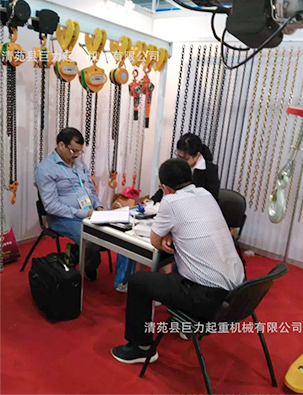


Understanding Chain Blocks and Lever Blocks A Comprehensive Overview
In the realm of construction, manufacturing, and transportation, the importance of effective lifting and hoisting equipment cannot be overstated. Two prominent types of lifting mechanisms are chain blocks and lever blocks, each serving distinct purposes and edges in various operational contexts.
Chain Blocks The Backbone of Heavy Lifting
Chain blocks, also known as chain hoists, are mechanical devices that utilize a chain and a block system to lift heavy loads vertically. They typically consist of a hook, a chain, and a lifting mechanism that can be operated either manually or electrically. The design of chain blocks allows for a high weight capacity, often enabling the lifting of several tons with relative ease.
The operation of a chain block is straightforward. When the user pulls on the hand chain, it engages the gears within the block, allowing the load to be lifted. The advantage of chain blocks lies in their versatility; they can be used in a variety of settings, from industrial warehouses to construction sites. Moreover, their compact design makes them easy to transport and position, making them ideal for environments where space is limited.
Lever Blocks Precision and Control at Your Fingertips

Lever blocks, on the other hand, are manual lifting devices that utilize a lever mechanism to raise or lower loads. They are often lighter and more portable than chain blocks, making them suitable for smaller-scale applications or more confined spaces. Lever blocks operate using a simple ratchet and pawl system, which allows users to securely lift heavy items with minimal effort.
One of the main strengths of lever blocks is their ability to provide precise control when lifting or lowering loads. The lever action enables the operator to make fine adjustments, ensuring that loads are handled safely and securely. This precision is particularly useful in scenarios where exact positioning is crucial, such as in assembly lines or during the installation of heavy machinery.
Choosing the Right Tool for the Job
When deciding between chain blocks and lever blocks, it is essential to consider the nature of the task at hand. For heavy-duty applications requiring substantial lifting power, chain blocks may be the better choice. Conversely, for tasks that demand mobility and precise control, lever blocks can offer significant advantages.
In conclusion, both chain blocks and lever blocks are invaluable tools in the lifting and hoisting industry. Understanding their unique features and advantages allows operators to select the appropriate equipment for their specific needs, thereby enhancing safety and efficiency in operations across various sectors. Whether you are lifting heavy machinery or making precise adjustments in a workshop, these lifting devices play a vital role in the safe handling of materials.



